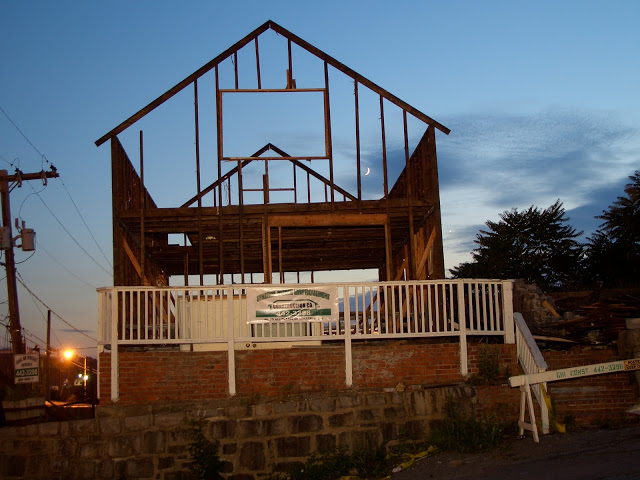Ilya Shapiro and I have a new piece at The Federalist discussing the timing of the Solicitor General’s appeal in United States v. Texas. Since the government failed to seek a stay in May, I predicted that the Obama Administration effectively risked the Court not being able to resolve the case during the OT 2015 Term. We are now in that crunch time.
Our goal in this piece is to respond to the inevitable criticisms that it would be illegitimate for the Supreme Court to hear this case according to the normal course of its calendar process–that is offering the customary 30-day extension for the BIO, hearing the case at the appropriate conference, granting certiorari, and hearing the case when other cases granted at the same conference are held. We argue that not only would this process be appropriate, but it may even be the ideal course of action under the circumstances.
First, notwithstanding the Solicitor General’s admonition that this case warrants “immediate review,” this case could have come to the Supreme Court 6 months ago in the form of an emergency motion for a stay. These “shadow docket” appeals have become strikingly common in the same-sex marriage litigation, concerning voting rights, and everything else that is really, really urgent. The government did not seek such a stay–much to the consternation of many in the immigration community.
That is, in addition to the inexplicable delay in appealing Judge Hanen’s initial ruling, the administration didn’t seek Supreme Court review of the Fifth Circuit’s initial ruling—or even a stay of the sort that’s granted when, say, the legality of a voting law is in doubt close to an election. In a decision its supporters widely criticized, the White House opted instead to wait for the Fifth Circuit to consider the merits. That move sent a clear signal: this case is important, but not dire.
If indeed time were of the essence, as the government’s petition now insists, the solicitor general should have gone directly to the Supreme Court in May. Had he done so and prevailed on an emergency motion—perhaps after a hearing as early as June—the administration could have resumed preparations to roll out the program in the event of an “inevitable” court victory. By failing to do so, DAPA implementation is on hold.
As Texas noted in its request letter:
“If petitioners’ opposition stems from concern about short-term consequences of the district court’s preliminary injunction, petitioners could have sought a stay pending appeal.”
Texas is exactly right, and the equities suggest that the Solicitor General’s urgency may have a different base. We note:
The import of this step for the government’s top advocate—institutionally known as the “tenth justice”—is to make the court decide DAPA’s legality while President Obama is still in office.
Second, in keeping with the modus operandi of the Roberts Court–this is a case that may never need to be resolved. If the Court hears this case in the normal course of business, it could fall of the docket.
It would also mean the next president could rescind or otherwise change DAPA in a way that moots the case. In keeping with the modus operandi of the Roberts court, the justices can simply decide not to decide yet—with some hope that this turns out to be a decision not to decide ever. …
We will know as early as November 8, 2016, whether a Republican president will rescind DAPA or a Democratic one will extend it. If it’s the latter, the Supreme Court can hear the case and—we argue—find that it is unlawful. But if it’s the former, the justices can simply take the case off their plates and avoid the need to resolve a major challenge to our constitutional structure.
Unlike laws, which stay on the books regardless of who is elected, there’s a 50/50 chance that President Obama’s unilateral action will be reversed after January 20, 2017. The Supreme Court should invalidate DAPA—but only if and when it has to.
The Court has avoided the big constitutional questions in recent years by issuing fairly narrow statutory holdings–referred to by Richard Re asthe Doctrine of One Last Chance. Here, a big issue can be avoided by (gasp) granting a customary 30-day extension for a Brief in Opposition. In my mind, opting not to prematurely rush to decide this case would be the best-case scenario. If the President in November continues defending DAPA, it will be fully briefed, and can be resolved quickly.
Third, moving to the merits, this case is really, really complicated. It involves significant issues of standing, APA procedural and substantive claims, and (we argue) constitutional claims. The court of appeals yielded a sharply divided 135-page opinion. Contrary to the charges that the 5th Circuit “slow walked” the opinion, getting two judges to agree to a massive opinion, and respond to a forceful dissent, is time-consuming. Four months is well within the normal bounds of such a case. Getting (at least) 5 Justices to agree on an opinion involving a massive separation of powers case is going to be tougher–and this is a job that should not be rushed in the last 8 weeks of May and June.
When the Supreme Court has to rush to issue a landmark separation-of-powers decision, the decisions are often fractured and divided, as the justices lack sufficient time to coalesce around a single reasoning. This case may set a precedent that will shape the scope of executive power and prosecutorial discretion for decades to come. There is no reason for the court to cram the case into eight weeks in late spring.
Our position isn’t that the Court should, or should not take steps to expedite the case beyond the normal course of business. Rather, if the Court opts to proceed at the normal pace, there are strong reasons for doing so.






